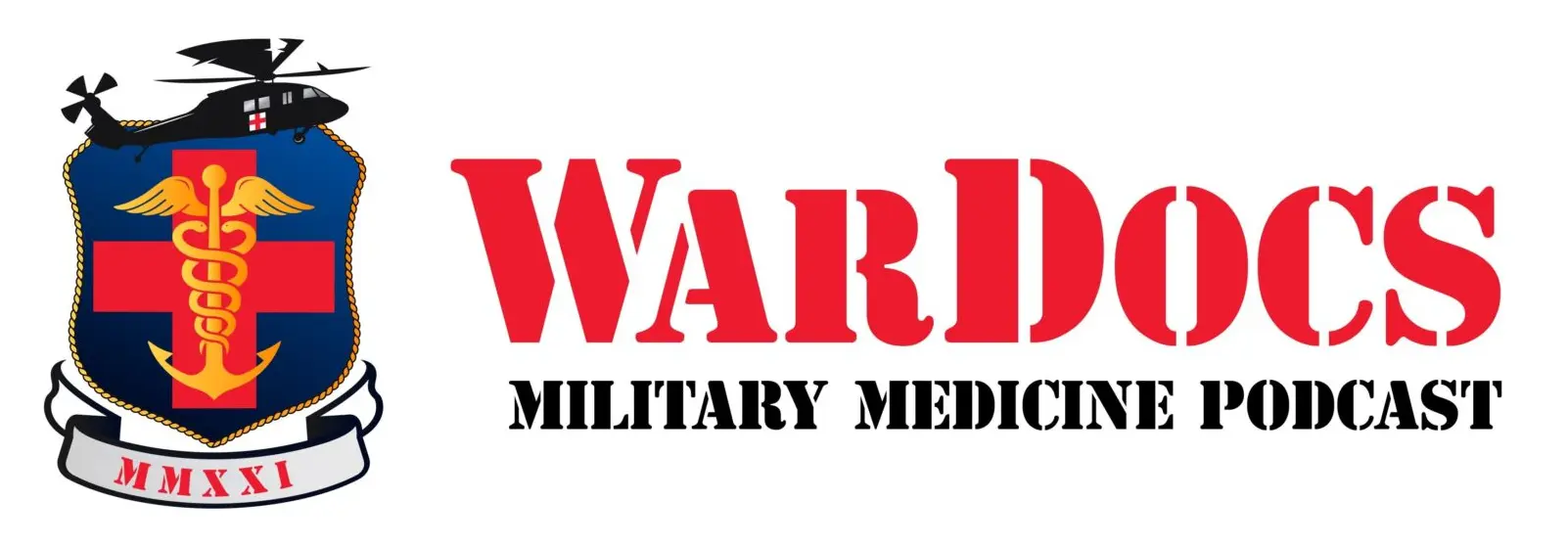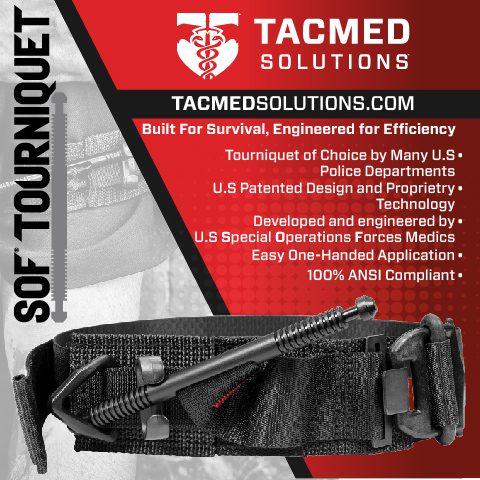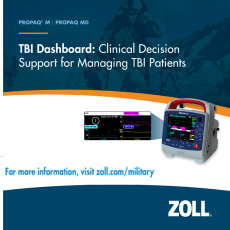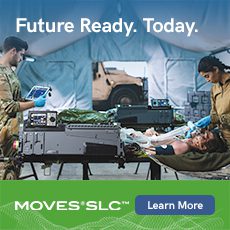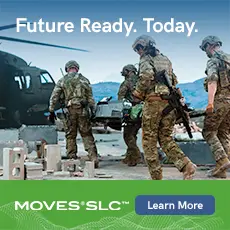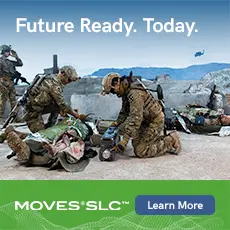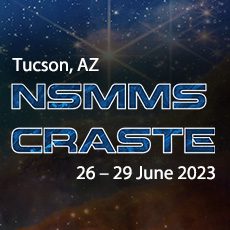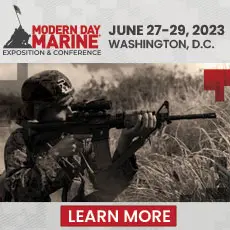Enabling the Joint and Combined Force Mission
Enabling the Joint and Combined Force Mission

LTG D. Scott McKean
Deputy Commanding General
U.S. Army Futures Command
Director, Futures and Concepts Center
From Armor & Mobility, Fall 2022
LTG Scott McKean, Deputy Commander of Army Futures Command (AFC), spoke with A&M about some current Army modernization efforts and ways AFC is crafting a Joint Force mindset for mission success on the future global battlefield.
A&M: Would you give an overview of the Army’s Futures and Concepts Center (FCC) mission?
LTG McKean: The Futures and Concepts Center (FCC) plays a key role in determining how the Army will prevail on future battlefields. Our efforts center on four core interlocking mission areas – concepts, experimentation, requirements, and integration. When we fight, we do so as a Joint and Combined Force. Consequently, our efforts are designed to ensure the Army is a potent contributor to future Joint and Combined warfare.
FCC’s Directorate of Concepts (DOC) leads FCC’s Future Study Program (FSP). FSP builds on estimate of the Future Operating Environment produced by Army Future Command’s (AFC) Directorate of Intelligence and Security. FSP Seminars, workshops, and wargames develop and experiment with future warfighting concepts and organizational constructs.
The FCC G-3/5/7 Directorate of Operations and the Joint Modernization Command (JMC) spearhead our experimentation, FCC’s second core mission area. We draw on our efforts in concept development to inform and guide experimentation and rely on experimentation to enable concept and capability development.
Project Convergence is our primary program for experimentation, or as we like to refer to it, our Campaign of Learning. Throughout the year we conduct a series of linked experiments that culminate in a capstone event conducted at locations throughout the United States and abroad. The capstone event is conducted at scale and a high level of complexity.
Project Convergence is not only integral to developing the future Army but is also among the Army’s contributions to the development of Joint capabilities. As we continue to build on Project Convergence by incorporating allies and partners, we are adding a Combined dimension to our campaign of learning.
Our analysis and experimentation efforts extend beyond Project Convergence. For example, JMC is also charged with conducting Joint Warfighting Assessments (JWA) designed to enhance warfighting capability. JWAs are live multi-echelon joint and multinational exercises that play an important role in the assessment and integration of multi-domain operations concepts, capabilities, and formations at echelon.
Concept development and experimentation are critical inputs to FCC’s third core mission area of requirements development. FCC’s Futures Integration Directorate (FID) leads FCC’s efforts in this mission area. FID produces capability requirement documentation that describes technical attributes, functions, and performance standards to achieve overmatch for the Army of 2030 and the future Army of 2040. FID ensures that requirements account for the factors in the DOTMLPF-P framework – doctrine, organization, training, materiel, leadership and education, personnel, facilities, and policy.
AFC streamlined and improved the requirements process and the requirements themselves. The Entry Gate Process is one of AFC’s little-known successes. FCC played a critical role in its creation and implementation, achieving a 97% approval rate of requirements by the AFC Commanding General and decreasing staffing time by 45%. This enhances our ability to provide requirements more rapidly to the acquisition professionals and capabilities into the hands of soldiers.
FID also leads FCC’s final mission area of integration, ensuring capabilities are developed with a system-of-systems perspective and not stovepiped. FID ensures the Army’s future capabilities are sustainable, network compliant, and interoperable with existing army systems. Through the Identification and development of concept required capabilities, FID uses concept development and experimentation to bridge the gap between concept required capabilities and formally defined requirements.
In summary – FCC’s core mission areas are concepts, experimentation, requirements, and integration. We are validating the Army of 2030 and informing the Army of 2040, and in doing so contribute to the development of the Joint Force.
A&M: Would you provide us a few thoughts about how you see the future?
LTG McKean: I’ll point to three developments on my mind. Please note that these are just three subjects. There are others and we will adapt our thinking based on the results of initiatives including wargaming and experimentation. Regardless of developments, the need to make contact and defeat enemy forces remains a core function of the Army.
First, when contending with peer adversaries all domains will be contested. Whether operating on the ground, in the air, on or under the oceans, in space, or in cyberspace we cannot simply assume that we will begin with or be able to achieve steady state dominance. Our adversaries will make us work to achieve temporary positions of advantage such that we can maneuver to achieve our objectives.
Second, autonomous systems will continue to proliferate across the globe. Whether produced or purchased, more nations will have greater numbers of autonomous systems with increasingly advanced capabilities. This relates to a third trend of sensor saturation. The battlefield of the future will be saturated by sensors making it nearly impossible to hide. This in turn will require that we alter our approach to positioning and maneuvering forces. Future warfare will require a deliberate sensor-counter sensor fight.
We must bear in mind that while the character of warfare is changing, the nature of warfare remains constant. Although there are several ways that the nation may choose to use the military instrument of power, in its penultimate form, war comes down to impacting the will of our adversaries through the destruction of their means of resistance or the seizure and control of territory and populations. This weighs heavily upon the thinking of military leaders and if the nation calls upon us to fight and win a future war, doing so will require a combined arms team on the ground as part of a Joint and Combined force.
A&M: How Does Ukraine factor into your thinking about future warfare?
LTG McKean: It is still too early to draw concrete lessons from the war in Ukraine. I have been watching developments in areas including the impact of urbanization, gap crossing and vehicle weight, the ubiquity of sensors, contested logistics, and the employment of artillery, anti-tank weapons, air defense weapons, and drones.
Human-machine teaming will play an important role. It is safe to say that autonomous systems and capabilities will play an increasing role. As a general principle, we will aim to make first contact with uncrewed systems. Still, Commanders, not machines, will make decisions. Commanders will use mechanisms including rules of engagement or direct control of weapons systems to ensure proper command and control.
I see Combined Arms Teams operating in a more distributed manner, concentrating only to the extent that achieving the convergence of effects requires them to do so. This approach presents new requirements in terms of sustainment and autonomous systems and artificial intelligence are likely to play a role. For example, autonomous systems may provide us the ability to dispatch machines to deliver supplies with minimal human intervention. Artificial intelligence will enable us to ensure the right materials are proactively pushed to the warfighter instead of merely responding to requests for materials in response to their expenditure. If you combine those two ideas you may have autonomous systems proactively delivering supplies, freeing up human talent to dedicate to tasks that require human action.
A&M: Several times you have emphasized the importance of Jointness, as well as the importance of allies and partners. Could you explain your thinking in this regard a bit more?
LTG McKean: It is impossible to conceive of a situation in which the Army will not fight as part of the Joint Force and difficult to imagine a scenario in which we will not fight as part of an international coalition. We should not only train as we would fight, but also experiment as we would fight. Or for that matter we should develop concepts with our sister services and our allies and partners, again because we are most likely to fight together.
As a concrete example, we continue to support the development of Mission Partner Environments (MPE). MPEs are operating frameworks that enable command and control and information sharing for planning and execution across the full range of military operations. We are establishing and employing an MPE in Project Convergence to enable a greater level of Joint and Combined participation in experimentation.
A&M: Your comments thus far, combined with your remarks in other events, speak to the importance you place on network capabilities and architecture. It is interesting that networks play such a prominent role in your efforts as opposed to weapons systems. What accounts for this?
LTG McKean: There is a symbiotic relationship between weapons systems, sensors, and networks. FCC uses experimentation to learn how to more effectively design and leverage networks that can integrate sensors and weapons systems. Through experimentation we inform our concept, requirements, and integration mission areas. Together these efforts will enhance our future ability to prevail in all forms of competition and conflict.
We approach networks from both a technical and an operational perspective. The technical perspective concerns the ones and zeros, frequencies, and data standards. It is concerned with which system can “talk” to which system and how they do so. We have challenges in this regard that we are working to overcome. We also approach networks from an operational perspective, and this is a particular area of emphasis for the Combatant Commands. In other words, we must consider the Joint warfighting functions that we need to perform, for example fires or sustainment. Each of these functions must be vertically and horizontally integrated using networks.
The Combatant Commands place a premium on networks that can integrate the Joint warfighting functions. For example, an integrated fires network would account for all of a commander’s fires capabilities across all domains and quickly choose the best shooter for a specific target. At the same time, an integrated sustainment network would link to the fires network to consider factors including munitions resupply and predictive maintenance for the systems. These factors would inform the selection of the shooter in advance of the combat action, not in reaction to it.
In future warfare victory is likely to go to the side that can sense, make sense, and act faster and more effectively than its adversary.
A&M: Where are we with Project Convergence and what might we expect in future iterations?
LTG McKean: Project Convergence 2022 will center on two scenarios focused on the Indo-Pacific and Europe respectively. PC 22 builds on the achievements of previous iterations. We carry forward lessons learned and will add scale and complexity to the experiment. Further, we have designed the experiment to simulate real world distances and distributed operations. We are also including additional participants and capabilities at more locations. The United Kingdom and Australia will participate in PC 22, and we look forward to adding more allies and partners to future iterations.
We design and govern Project Convergence through a three-star Combined Joint Board of Directors with representation from all the services and our Allies and Partners. Project Convergence is an opportunity for each of the services and our allies to experiment with their respective concepts in support of developing future Joint and Allied forces. Moving forward, we will expand every facet of PC including participants, technology, locations, scale, and complexity.
It is worth noting that Project Convergence is a platform, or a venue, for experimentation. It is Army led but Joint and Combined in its focus. Project Convergence is not separate from Project Overmatch and ABMS initiatives. Rather Project Convergence is a venue that incorporates their learning and brings learning into a Joint and Combined environment. We are committed to learning together with our sister services, Allies and Partners to optimize how we fight as a Joint and Combined team.
A&M: If nothing else, what should we take away from this interview?
LTG McKean: FCC’s core mission areas are concepts, experimentation, requirements, integration. FCC is focused on validating the Army of 2030 and informing the Army of 2040. We seek to inform and enable the Joint Force, as well as our Allies and Partners.
Our Army is in the midst of its largest transformation in more than 40 years. FCC plays an important role in continuous experimentation and in developing the requirements to validate the Army of 2030. Based on how Multi-Domain Operations went from concept to doctrine, FCC is embarking on the next Army Operating Concept to design the Army of 2040.

